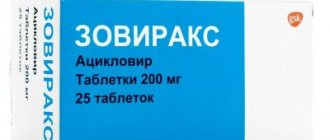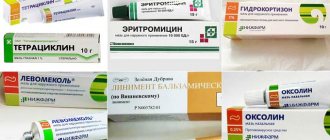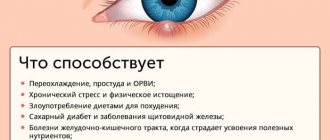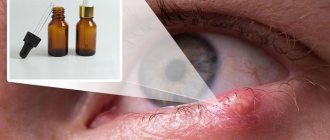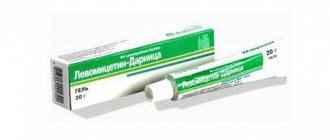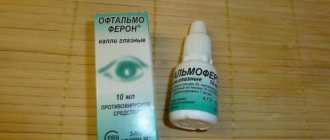Cough, runny nose - we have long learned to cope with these seasonal ailments quickly and effectively! However, an insidious cold strives to remind itself. How to overcome those manifestations of the disease that spoil not only your well-being, but also your appearance.
Herpes can curl your lips. The undoubted leader in prevalence among such ailments is herpes , which is also called “colds” and “fever” on the lips. There is an opinion that we are all carriers of this virus, but not everyone manifests it in an active form. As the head of the department of the Department of Organization of Medical Care and Health Development IVAN KOKOKIN explains, the disease is actually present in the bodies of 95% of city residents. But for some it manifests itself several times a year, while for others it remains in a “lethargic” state all their lives.
“The virus enters the body in early childhood, at 3–4 years, when the antibodies against herpes transmitted to the baby by the mother disappear,” says Ivan Kokotkin. “The disease is transmitted along with the biological fluids of others, for example, with saliva, if a child is kissed by carriers of the infection.” The virus penetrates sensitive nerve endings and integrates into the genetic apparatus of nerve cells. After this, it is impossible to remove it from the body.
Complications. Herpes manifests itself in the form of characteristic blisters in the lip area. If the rules of personal hygiene are not followed, the virus can also affect other areas of the body: if you rub your eyes with your hands after touching the sore, you can provoke ophthalmoherpes, a serious disease that sometimes leads to decreased vision. If precautions are not taken, the virus can develop into genital herpes.
Treatment of herpes in a day. The fight against the manifestations of herpes can only be called treatment only conditionally. In fact, this is only symptom relief. Unfortunately, scientists have not yet learned how to expel the virus itself from the body.
To make the fight against “herpes” on the lips more effective:
- - Use acyclovir-based creams and ointments at least 4 times a day for five days;
- — Take nutritional supplements containing lysine;
- - Remember that the use of corticosteroids (hydrocortisone ointment) reduces itching, but sharply increases the area and severity of the lesions, as well as the duration of the disease;
- — Apply antiviral ointments only with cotton swabs;
- — For one-day treatment of herpes lips, the doctor may prescribe valacyclovir tablets. If you take two 500 mg tablets, one in the morning, one in the evening, within 24 hours of the onset of the disease, cold sores on the lips will not develop or will heal faster.
I'm going looking Recently, Canadian scientists announced a new discovery. “If human cells are infected with herpes type 1, the virus will come back again and again because it hides and blocks the immune system’s defense mechanisms,” said study author LUKE ENGLISH. “We found that the membrane of an infected cell can recognize the herpes simplex virus and stimulate the immune system to destroy it.” Scientists plan to put the discovery into practice to treat a virus that has so far remained incurable.
IMPORTANT! the “herpes” on your lips does not go away within 10 days , consult a dermatologist: this may be a symptom of other serious diseases. A prolonged course of “fever” may be a sign of decreased immunity and tumors.
Air kiss Herpes can be transmitted from person to person not only through direct contact, but also through airborne droplets. This happens especially easily in winter. And the point here is not only a decrease in immunity caused by hypothermia. American researchers have proven that it is much easier for virus particles to move in cold and dry winter air. Our body is exposed to danger from two sides at once: cold weather weakens the immune system and at the same time contributes to the spread of viruses.
A hot spot Another trouble that often plagues us during a cold is barley. It occurs due to acute purulent inflammation of the hair follicle of the eyelash or the sebaceous gland on the edge of the eyelid. Stye is caused by a bacterial infection and is most often observed in people with a weakened immune system. The stye “ripens” for several days: first, a small swelling appears on the eyelid, in which you can feel a painful spherical swelling. Over the course of 3–4 days, the “ball” enlarges, turns red, then an abscess in the form of a yellowish dot is discovered on it, which soon “opens up”, and then the painful sensations noticeably subside.
Complications. “The structural features of the eyelids are such that the infection very easily spreads beyond the focus of inflammation,” warns ophthalmologist NATALIA PRYAZHNIKOVA. — Purulent complications can be triggered by even minor mechanical impact, so touching the stye, much less opening it, is strictly contraindicated. This can lead to extremely serious consequences."
Treatment. In an adult, treating a single stye usually does not pose a big problem. At the stage of incipient inflammation, to stop it, sometimes it is enough to lubricate the stye 2-3 times with alcohol. However, if recovery is delayed, do not be lazy to see a doctor, as this may be a “signal flag” of other diseases.
When treating barley you should not:
- Touch your eyes with your hands;
- Carry out cosmetic procedures (avoid the area of the sore eye, even just applying cream);
- Doing eye makeup;
- Squeeze out or even more so pierce the barley;
- Apply a damp, warm compress (wetting the skin can lead to infection entering the openings of the excretory ducts of other sebaceous glands, which can trigger a relapse of inflammation).
Recommended:
- Treat barley with 70-degree ethyl alcohol, ether or brilliant green;
- Use eye drops: 0.3% cypromed or chloramphenicol;
- Use eye ointment with antibiotics (tetracycline, chloramphenicol, erythromycin);
- Apply dry heat (a folk remedy, but nevertheless effective, is a boiled egg or baked onion, wrapped in a clean, dry cloth);
- UHF therapy.
Causes of the disease
Frequent causes of barley are hypothermia and bacterial damage. The causative agent is Staphylococcus aureus. Factors provoking the pathological process:
- weakened immune system;
- poor nutrition;
- insufficient hygiene;
- presence of chronic infections;
- concomitant diseases of the eyelids;
- disturbance of sleep and rest patterns;
- chronic diseases of the gastrointestinal tract;
- worms;
- acclimatization after travel;
This disease is often observed in one-year-old children due to the immaturity of the immune system. Genetic predisposition is also of great importance.
Useful video
How to use eye ointment:
Symptoms in children
The disease develops in several stages. At first there is redness and swelling. This period lasts up to 3 days. During the second stage of development, the formation of a vesicle with pus is observed. After a few days it bursts and all its contents come out.
- swelling;
- itching;
- redness of the eyelid;
- increased body temperature;
- headache.
In some cases, enlarged lymph nodes are observed. When the first signs appear, treatment must begin.
How to treat pathology in childhood
Treatment methods are selected depending on the patient’s age and severity of the disease. It is strictly forbidden to get rid of inflammation mechanically. This is fraught with eyelid abscess or meningitis.
Drug therapy is prescribed. In this case, the doctor takes into account the patient’s condition and medical history. Alternative therapy methods can be used as additional methods.
What absolutely cannot be done when a pathology appears?
For treatment to be effective, you must follow all the doctor’s recommendations. It is strictly forbidden to pierce the abscess and try to squeeze out the pus. This can lead to infection in the orbit of the eye. In particularly advanced cases, death is possible.
If you have stye on your eye, you should not apply compresses. It has been proven that Staphylococcus aureus multiplies in a humid environment. As a result, the bacteria can penetrate the glands and sebaceous sacs.
Use of Acyclovir for barley
Acyclovir for barley is used in the form of an ointment (3%) for patients of different age categories.
Application of the drug:
- Before applying the ointment, you should clean the eye skin around the affected area;
- Then you need to clean your hands with antibacterial soap and Chlorhexidine solution. The procedure can also be carried out wearing disposable gloves. This is necessary to protect the eye from infection;
- Acyclovir for barley should be applied to the conjunctival cavity. To do this, the lower eyelid is pushed back and gently moved down;
- During the administration of the ointment, the patient is recommended to look up so that the pupil is located at the top. With the other hand, you need to squeeze a 1 cm strip of liniment into the conjunctival space;
- Then the patient should close his eyes for 3 minutes and move the eyeball so that the ointment is distributed.
For barley on the eye, Acyclovir should be applied at intervals of 3 to 4 hours (at least 5 times a day) . Treatment is continued for 5 - 7 days. To consolidate the effect, the antiviral drug is used for another 3 days.
The dosage of the liquid dosage form is 1 or 2 drops under the lower eyelid of each eye with an interval of 4 hours. The medication is recommended to be used when the first symptoms appear.
Aclovir in the form of drops and ointments should not be combined, as the likelihood of side effects increases. Dosage forms that act locally can be taken simultaneously with tablets to speed up recovery. The dosage of the pills is determined by the doctor.
Using ointments: pros and cons
Ointment for barley can be used in combination with drops or as an independent method of treatment. The main advantage of this dosage form is ease of use. The product is simply applied evenly behind the lower eyelid, thereby distributing it over the source of infection.
This dosage form provides an immediate therapeutic effect. The affected eye receives the required amount of medication.
Before using the ointment, you must study the instructions in detail. Not all drugs are suitable for children. The form of the disease is of great importance. There are drugs that will be ineffective for the external form, while others will only work for the internal form of barley.
How to properly apply medications to children?
Before applying the ointment, it is necessary to test for an allergic reaction. To do this, apply a small amount of the product to the bend of the elbow. If no reaction is observed, then the product can be used.
The ointment should only be applied with clean hands. Otherwise, secondary infection is possible. In most cases, the medicine is placed under the eyelid. If the abscess is located outside, then the procedure is carried out without pawning.
The medicine must be applied before opening the abscess and for several days after. If severe itching or burning occurs, you need to wash off the remaining ointment and consult a doctor.
Side effects and contraindications
If you are overly sensitive to the composition of the drug, it is strictly forbidden to use the ointment. During breastfeeding and pregnancy, the drug is used very carefully under the supervision of a physician.
Treatment with Acyclovir can cause the following adverse reactions: conjunctival inflammation, burning in the eye, keratopathy, blepharitis, allergic reaction, angioedema.
If the ointment was accidentally swallowed, the following undesirable symptoms may occur: headaches, shortness of breath, convulsions, nausea, coma, vomiting.
Immediately after use, a slight burning sensation may occur, but it soon goes away on its own. The use of ointment does not in any way affect the reaction speed and concentration of attention.
List of the best drugs
The doctor selects the drug, dosage and sets the duration of the therapeutic course. If its recommendations are not followed, side effects in the form of local reactions may occur.
Tetracycline
Tetracycline ointment has a quick and effective effect. The medicine is not suitable for treating children under 5 years of age or if there is a severe allergic reaction to its components.
Tetracycline provides antiseptic, antibacterial and anti-inflammatory effects. The dosage is prescribed by the doctor. Most often, two uses per day are sufficient. Apply the ointment thinly. There are no side effects.
Erythromycin
Erythromycin ointment contains an antibiotic from the macrolide group. It is effective against staphylococci. It is recommended to apply the product to the affected area 2 times a day. The product can be applied directly to the eyelid or on a bandage.
Synthomycin
The active ingredient in Synthomycin ointment is chloramphenicol. It has a pronounced antibacterial and bactericidal effect. It is recommended to apply the medicine 3-4 times a day. There are no contraindications, but sometimes allergic reactions in the form of rash and itching can occur.
Hydrocortisone
Hydrocortisone ointment is not the main treatment for stye. It is used in combination with another antibiotic. The product does not have an antibacterial effect, but it effectively eliminates the symptoms of the pathological process.
The product has antiallergic, antihistamine and exudative effects. The use of hydrocortisone ointment should be avoided for skin diseases of the eyelids, viral and fungal infections.
Vishnevsky
Vishnevsky ointment is often prescribed for the treatment of inflammatory diseases. However, it is only suitable for external therapy. Its peculiarity is its natural composition.
Active substances help relieve swelling, eliminate signs of inflammation and pain. As a result, the regeneration process occurs faster.
Oxolinic
Oxolinic ointment consists of two components: petroleum jelly and tetraxoline. The medicine has a pronounced immunostimulating and antiviral effect. It is well tolerated by the mucous membrane of the eyes.
Oxolin is recommended to be applied 2 times a day. After the first use, there may be a slight burning sensation, but it goes away quickly.
Description of the drug
Acyclovir is a powerful antiviral agent used for local treatment of inflammation and associated complications. It is often used as an additional remedy in complex therapy of the body (mostly this medicine is in the form of tablets, injection suspensions). The key condition is that the disease is viral in nature, i.e. It will not help with regular stye (which is quite rare).
Acyclovir is produced in different forms, but ointment for external use is especially popular (5%)
The drug is produced in several forms: ointments, creams, tablets and injection lyophilisate (used extremely rarely, due to the large number of side effects). Eye diseases are treated with eye ointment (3%), as prescribed by an ophthalmologist.
In case of inflammation of the eyelid, the medication is injected into the problem area (conjunctival sac) several times a day, thanks to which it is possible not only to get rid of the main problem, but also to neutralize the likelihood of relapse. Liniment is also used for preventive purposes, but by agreement and in dosages recommended by the attending physician.
Pharmacological action and group
Acyclovir is one of the representatives of a large pharmacological group of antiviral drugs. We are talking about an artificially synthesized deoxyguanidine nucleoside. It has a structure similar to viral enzymes, due to which the active substance quickly reacts and interrupts the processes of reproduction of pathogenic structures.
The action of the main component in the virus:
- After application to the problem area, Acyclovir enters the affected cell, after which it is transformed into the active form of triphosphate, which is due to the action of thymidine kinase.
- Triphosphate blocks the replication capabilities of foreign DNA, without which the division and spread of the virus is no longer possible.
The peculiarity of the substance in question lies in its selective activity - trifsofate has virtually no effect on the biochemical processes of healthy cells.
Composition and release form
The medicine is produced by many pharmacological companies, both in Russia and abroad. For ophthalmic purposes, an ointment containing 3% of the active substance is used. This concentration is considered safe for interaction with the corneal structure and periocular tissues. For external use (in the fight against human herpes viruses) use 5% cream or ointment.
In addition to the concentration of the main element, the compositions also differ in auxiliary components. Most often, manufacturers use the following ingredients:
- distilled water;
- pharmaceutical petroleum jelly (extracts based on it);
- propylene glycol;
- paraffin.
The main purpose of the listed compounds is to ensure unhindered and rapid absorption of acyclovir into the structures of the dermis.
Instructions for use
Eye ointment Acyclovir Acri (like any other 3%) for barley on the eye in adults and children is used by instillation.
Step-by-step instructions for using liniment:
- At the preliminary stage, the skin around the eyes is cleaned of cosmetics and treated with an antiseptic.
- Hands are thoroughly washed with antibacterial soap and treated with chlorhexadine solution (this step can be skipped if you carry out manipulations with sterile gloves).
- The lower eyelid is carefully separated from the eyeball with the fingers of one hand and slightly shifted downwards, thereby freeing up space for the drug.
- Look upward with the eye so that the pupil is at the top of the eye.
- With the second hand, squeeze a 1 cm strip of medication into the conjunctival sac.
- Close the eye for 2-3 minutes and gently move the eyeball so that the composition is evenly distributed.
The procedures are repeated every 3-4 hours, but not less than 5 times a day. Duration of therapy is 5-7 days. If a good result is achieved, treatment is continued for another 2-3 days to consolidate the effect.
Indications
Eye ointment (3%) differs from liniment for external use (5%) in the concentration of the active substance. It is used mainly in ophthalmology, as well as to combat herpes viruses localized on the mucous membranes.
Indications for use:
- herpetic keratitis caused by the activity of Herpes Simplex (1-2);
- inflammatory processes caused by Staphylococcus aureus (including the use of acyclovir for barley);
- genital (primary and recurrent) herpes.
It is safest to use the drug as prescribed by a doctor. In ophthalmology, it is supplemented with antibacterial drops when it comes to severe pathologies. Often prescribed to children.
Contraindications and side effects
The main contraindications to the use of Acyclovir are individual intolerance to the components of the drug and hypersensitivity of the body. In other cases, the use of liniment is indicated. Pregnant women are advised to see a doctor when using the ointment. Despite the small amount of medication used, it is quickly absorbed by tissues and penetrates into the main bloodstream.
During the period of introducing the drug into the conjunctival sac and during the therapeutic course, it is forbidden to use contact lenses.
Side effects, if the dosage and recommendations are followed, are extremely rare, however, they should not be excluded:
- partial visual impairment (temporary);
- itching, burning, rash;
- intense lacrimation.
Side effects disappear after 6-8 hours. No intervention is required on the part of the patient; they stop when the use of the medicine is stopped.
Directions for use and doses
When using a cream or ointment for stye on the eye, it is important to follow simple recommendations for applying the composition and dosage.
- Adults and children are given the medicine immediately when stye appears on the eye.
- Procedures are carried out at least 5 times daily (for children – 4 times a day). The interval between injections is 3-4 hours.
- The daily dose for adults should not exceed 800 mg of liniment, for children - 200-400 mg.
- For instillation, use a strip of ointment 10 mm long, which corresponds to 150-180 mg.
The duration of treatment is determined by the ophthalmologist, on average 3-5 days with the possibility of prolongation up to 10 days.
Prevention of relapse
To avoid recurrence of barley, it is necessary to strengthen the immune system and follow the rules of hygiene. From early childhood, a child should be taught to wash his hands with soap after a walk and before eating. The baby must have his own towel.
The child must have high-quality and balanced nutrition. The diet should contain a large amount of vegetables and fruits. In the spring-autumn period, it is recommended to take a course of vitamins. The drug, dosage and duration of use are prescribed by the doctor. Any immunostimulating drugs should be taken only after being prescribed by an immunologist.
The immune system should be constantly strengthened, this is facilitated by hardening, playing sports and walking in the fresh air. Severe hypothermia and colds should be avoided.
Instructions for use for barley
To achieve the maximum effect from treating barley with Acyclovir, you must adhere to the following instructions for use of the medicine:
- Before applying the ointment, wash your hands well with soap and rinse your eyes with a solution of Furacilin or chamomile.
- Open the tube of ointment and squeeze a small amount of liniment onto a cotton swab or a special spatula included in the kit.
- Tilt your head back slightly and look up.
- Pull the lower eyelid with the fingers of one hand and, using the other hand, place the prepared medicine into the conjunctival sac, distributing it from the inner corner to the outer. The ointment can be squeezed directly from the tube into the eye, but in this case it is necessary to ensure that the tip does not touch the mucous membrane.
- Close your eyelids and move the eyeball from side to side, distributing the medicine evenly. Sit with your eyes closed for a few minutes. For best results, lightly massage your eyelid with your fingertips.
- Remove any remaining liniment with a napkin.
Acyclovir for barley
Acyclovir is a narrowly targeted antiviral drug intended for the local treatment of herpes viruses, herpes zoster and chickenpox. Available in tablet form, in the form of an ointment for external use and an ophthalmic ointment, and a lyophilisate for intravenous administration. Not many people know that acyclovir can be used for barley, but it will only be effective if the disease is viral. Stye is an inflammation of the upper eyelid, characterized by swelling, redness, pain and the development of a purulent core under the skin.
In most cases, it is provoked by a bacterial infection caused by pathogenic microflora such as streptococci or Staphylococcus aureus. In this case, an antibacterial ointment such as tetracycline or erythromycin is used to treat barley. As a last resort, if the disease is prolonged and cannot be cured, then locally synthetic glucocorticosteroids are used - dexamethasone, prednisolone or hydrocortisone.
They have a powerful anti-inflammatory effect, but they can only be used as prescribed by your doctor, as various side effects may develop. If the disease is a complication against the background of a viral infection, then first of all, drugs are prescribed to treat the underlying disease (systemic antiviral drugs or systemic antibiotics, paracetamol, etc.). In what cases can barley be the result of a herpes virus infection and how can it be treated with acyclovir?
Acyclovir for stye on the eye - can this ointment be used?
Most eye diseases arise as a result of increased activity of pathogenic microorganisms. One of these pathological conditions is stye on the eye (pussy) - purulent inflammation of the sebaceous gland of the upper or lower eyelid.
Various ophthalmic drops and ointments are prescribed for stye on the eye. An effective remedy is Acyclovir, a potent antiviral drug used to treat herpes, chickenpox and many other diseases of viral etiology.
Herpes on the eye, treatment and symptoms
Usually the herpes virus occurs on the lip, nose, in the mucous membrane of the nostrils, in the corners of the mouth, but on the upper eyelid it is a rare occurrence. If it occurs, it must be treated as quickly as possible, otherwise if the ichor from the wounds gets into the eye itself, a complication may arise in the form of conjunctivitis or blepharitis.
Reasons why the herpes virus appears on the upper eyelid:
- Chronic stress, mental, mental overstrain
- Constant and excessive heavy physical activity
- Poor food quality
- Low resistance of the body to pathogenic factors and viruses
- Hypothermia or overheating
- Long-term therapy with immunosuppressive medications (corticosteroids, immunosuppressants).
If the virus has settled in the upper eyelid, it will often appear there at the slightest decrease in immunity. It can easily pass for barley, only it is of a viral nature, and also ichor, not pus, oozes from the wounds. In this case, only topical antiviral agents, including acyclovir ointment, will help.
Acyclovir eye ointment is applied to the affected area 5-6 times a day every day until the wound is completely healed and the dried crusts fall off. This takes approximately 5-10 days, depending on the body’s resistance and the degree of damage. If you have an immunodeficiency, it is better to start treatment by taking pills. The lower the immunity, the higher the daily dose the attending physician will prescribe.
Composition and mechanism of operation
This antiviral drug is manufactured and marketed by a variety of pharmaceutical companies around the world. For the treatment of eye inflammatory processes, Acyclovir ointment with a 3% liniment composition is used. This ratio of the active substance is considered safe if the product comes into contact with the cornea of the eye and the surrounding soft tissue. For the treatment of external injuries, use 5% ointment. Its composition differs not only in the percentage of the active component, but also in the difference in auxiliary ingredients. As a rule, the drug consists of distilled water, petroleum jelly or a component based on it, propylene glycol and paraffin. The main mechanism of operation is the rapid absorption of the therapeutic agent into tissue structures.
Acyclovir is a drug that is produced by different pharmaceutical companies in various dosage forms, such as ointment, cream, tablets and injectable lyophilisate. For the treatment of eye diseases, ophthalmologists prescribe an ointment containing 3% active substance.
After applying the drug, it transforms in infected cells, blocking the reproduction of the virus.
The structure of Acyclovir is identical to the structure of viral enzymes, as a result of which the active substance molecules react with pathogenic bacteria and disrupt their development process. If the therapeutic agent is applied to the area affected by the virus, the main active component penetrates the infected cells and is transformed into the active form of triphosphate, which is influenced by the action of thymidine kinase. This action blocks the ability of pathogenic DNA to multiply and spread the virus throughout the body. Triphosphate is absolutely harmless to healthy dermal cells and does not affect the balance of their biochemical process.
Acyclovir for regular barley
Many people are interested, since on the vast information network you can find recommendations for taking acyclovir for ordinary bacterial barley, is it possible to take this ointment in this case? This decision is a strong misconception, since the nature of these phenomena on the eye is completely different (bacterial barley and herpetic). The first is caused by the activity of pathogenic microflora, and the other by viral activity. Since acyclovir is an exclusively antiviral drug, it cannot do anything against bacterial microflora.
Moreover, illiterate treatment at home without medical recommendations will only aggravate the course of the disease or, at best, a strong body will cope with the disease on its own, but not with the help of antiviral medication.
Main characteristics of the drug
Acyclovir is a powerful antiviral drug prescribed to eliminate local inflammatory processes. The drug is available in several forms:
- cream;
- eye ointment;
- pills;
- powder for suspensions;
- rectal suppositories;
- injections.
For barley on the eye, doctors prescribe 3% ophthalmic ointment (liniment). It is this form of the drug that is the safest and most effective when interacting with eye tissues. The main active ingredient of the ointment is micronized acyclovir. Additionally, Acyclovir contains the following components:
- calcium;
- white Vaseline;
- Aerosil;
- paraffin;
- distilled water;
- propylene glycol.
Acyclovir ophthalmic ointment is available in the form of small tubes of 4.5 or 5 grams, which contain 30 mg of active substance per 1 gram of liniment. The drug is sold without a prescription, has a low price and an effective direct antiviral effect.
The shelf life of liniment is 30 days from the moment the tube is opened.
